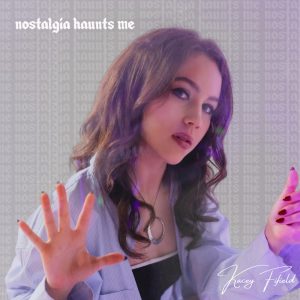The fact that Instagram has changed the creative industry nobody surprises anymore. Nowadays, photographers, like me for example, have to crop pictures the way it will be possible after to fit into the proportions 4:5 (Instagram format). Videographers must now record in the unnatural for the film industry vertical format. Visual artists – well… they are in the worst position. They have to create insta-art.
The phenomenon of insta-art OpenCall Magazine described in the article „Fine art goes mainstream again” published in our very first printed issue. Surprisingly, not only do modern artists create insta-art but some of the art made before Instagram even existed became an accidental insta-art. One of them is Infinity Mirrors Room by Yaouma Kusama.
Fine art goes mainstream again
Infinity Mirror Rooms in Tate Modern
The moment I heard it’s now on display at Tate Modern I knew I have to visit the museum. It wasn’t such an easy thing to do though. The exhibition was sold out within 48 hours. For four months ahead. From June till the end of October it is impossible to buy the tickets for the exhibition. Why Infinity Mirrors Room by Yaouma Kusama is so popular? One of the reasons is that Instagram loves it. And we love to share everything on Instagram, don’t we? Well obviously it’s also a very unique project and the story of an artist is at least unconventional. This is called now a good PR and catchy storytelling. But before all these modern terms were created Yaouma Kusama had been already famous.
Who is Yayouma Kusama?
Yayoi Kusama is a Japanese artist and writer. Across her career, she has made paintings, sculptures, performances and installations. For Kusama, the experience of art is about more than just looking. It can also be about stepping into the artwork and being immersed in it, as in her Infinity Mirror Rooms.
Kusama was born in Matsumoto, Japan, in 1929. Looking for ‘unlimited freedom, and a wider world’, she moved to the United States in 1957. She spent the 1960s in New York, immersing herself in the fastmoving art scene there.
From early in her life, Kusama has experienced visual hallucinations. She recalls a childhood memory: ‘One day after gazing at a pattern of red flowers on the tablecloth I looked up to see that the ceiling, the windows, and the columns seemed to be plastered with the same red floral pattern. I saw the entire room, my entire body, and the entire universe covered with red flowers’. She felt as if she was disappearing or dissolving. She describes this as ‘self-obliteration’. Using experiences like this in her art is a way for her to make sense of them and share them with others.
In response, she admitted herself to a Tokyo hospital in 1977. She still lives there to this day, with her studio close by. ‘I write novels and poems, and I also paint in the hospital. They are my saviours,’ she reflects.
The images in this room chart key moments in Kusama’s life and career. She has regularly had herself photographed with her works. Carefully staged images place her at the centre of her creative universe. – Tate Modern
Alice in Wonderland
As a self-respected Millenials I went to Tate Modern armed with a fully charged iPhone to record everything. I was a little bit upset when I realised that Tate Modern shows only 2 out of at least 7 infinity rooms originally created by Kusama. But I waited in the queue outside of Tate, inside the exhibition itself, and finally entered the first room to spend a wonderful yet 2 minutes inside 🤣. I think it took me more time waiting for the elevator in Tate than actually inside the rooms. When something is soooo popular be sure it will not last long. The rules were simple – 3 people go inside for 2 minutes only. I was lucky to spend 1 wonderful minute alone there :). There is something magical about Kusama’s art but also very interesting from the Instagram point of view. It might sound crazy but it really does look better on the phone (!). I was amazed by looking at it in reality but on my phone… it looks 3 times better! Apart from the room “The souls of millions of lightyears away” and “Chandelier of Grief” room the exhibition includes also some photos of Kusama and her art along with stories. I have read, watched, and listened to all materials and it took me like 20 minutes. Was it worth you might ask then? It definitely was. Could it be worth more? Totally. I believe the rest of the rooms are being presented somewhere else in the world. This is how artists make money, let’s not forget about it. Although a fully completed exhibition of 5 rooms would satisfy me more. I will not lie I went out a little bit hungry for art

Hanna Kantor
Founder of OpenCall Magazine. Fashion and commercial photographer. A graduate of Journalism and Photography at the University of Warsaw and Universita degli Studi di Milano. Sleeps long, works even longer.






